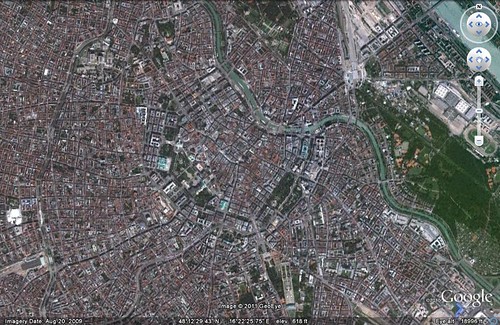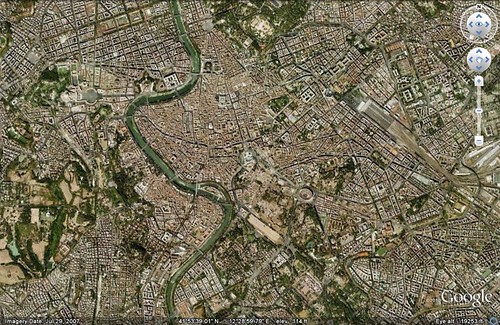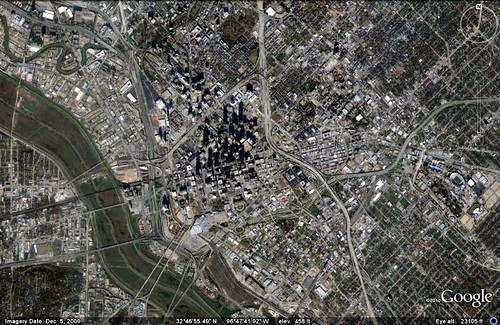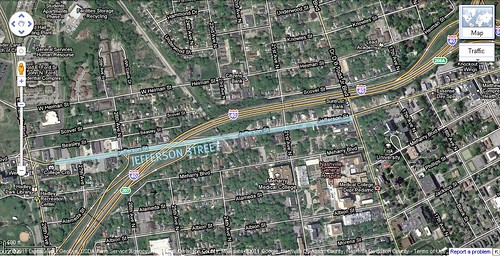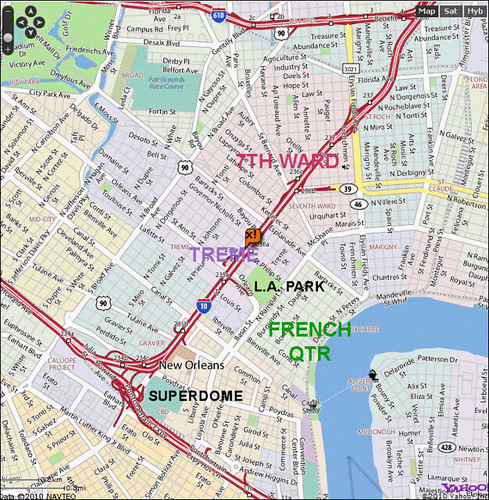Freeways without futures

Posted March 31, 2011 at 1:27PM
One of my most popular recent posts was published last month on Valentine’s Day. In it, I pointed out that some of the cities considered the most romantic in the world – such as Prague, Paris, Lisbon, Rome, Vienna, and Venice – had a number of things in common: walkability, lively public spaces and thriving downtowns, a strong sense of place, good public transportation, and so on.
Here’s something else they have in common: no (or almost no) freeways running through the center of town.
See, for example, Vienna and Rome, above. Yes, Paris has its Périphérique, Rome its Circonvallazione Orientale, but those freeway-style highways run around the center, not through it. The center is more likely to have boulevards and streets instead of freeways.
Now consider Atlanta and Dallas, above in the second pair of images. And note the prominence of the freeways.
Now, I’m not one to say that the Interstate Highway System in the US was a mistake. Far from it, the system of highways we now take for granted made intercity travel much more convenient for many more people. When I-40 was built from Asheville to Hickory when I was a kid, it meant we could visit my grandmother after my parents got off work and come back on the same night.
But, within cities, they did a lot of damage, building the transportation equivalent of the Berlin Wall through neighborhoods and parks, frequently displacing the poor from their homes while doing so. In our book Once There Were Greenfields, my friend and co-author Don Chen wrote:
“Indeed, many urban freeways were deliberately planned to run through low-income neighborhoods. Their construction was viewed as a win-win-win strategy of employing demolition and highway construction workers, providing access to growing suburban areas, and eliminating ‘urban blight.’ In effect, highway agencies were practicing their own program of urban renewal.
“During the first decade of Interstate highway construction, 335,000 homes were razed, forcing families to look elsewhere for housing . . .
“In many cases, the ‘urban blight’ targeted by the new road construction simply meant African-American communities—often thriving ones. A great body of work shows that urban freeways destroyed the hearts of African-American communities in the South Bronx, Nashville, Austin, Los Angeles, Durham, and nearly every medium to large American city . . .
“In Tennessee, plans for the construction of Interstate 40 were in fact redrawn to route the highway through the flourishing Jefferson Street corridor(see above), home to roughly 80 percent of Nashville’s African American-owned businesses. Not only did the construction of I-40 destroy this commercial district; it also demolished 650 homes and 27 apartment buildings while erecting physical barriers separating the city’s largest African-American universities: Fisk University, Tennessee A & I University, and Meharry Medical College.”
John Norquist, president of the Congress for the New Urbanism, has a good remedy for the worst of them: as they are reaching the end of their lives in decent repair, simply tear them down and replace them with urban boulevards. I know it sounds a bit counter-intuitive but, where it has been tried, it has worked, largely without exacerbating traffic problems. In a post last year, I cited John’s recommendation (and, concurrently, David Dixon’s), to take down the Claiborne Expressway (I-10, below) that tears through the heart of New Orleans’ storied Tremé district.
CNU has published a list of twelve aging “freeways without futures” that could be replaced with boulevards to the great benefit of their cities:
- Alaskan Way Viaduct, Seattle, WA
- Sheridan Expressway, Bronx, NY
- The Skyway and Route 5, Buffalo, NY
- Interstate 70, St. Louis, MO
- Aetna Viaduct-Interstate 81, Hartford, CT
- Route 34, New Haven, CT
- Claiborne Expressway, New Orleans, LA
- Interstate 81, Syracuse, NY
- Interstate 64, Louisville, KY
- Route 29, Trenton, NJ
- Gardiner Expressway, Toronto, ON
- Bonaventure Expressway, Montreal, QC
You can read more about them on CNU’s website.
Here’s a terrific short video, produced by Streetfilms, of John explaining why and how communities can benefit from replacing freeways with boulevards:
Move your cursor over the images for credit information.
